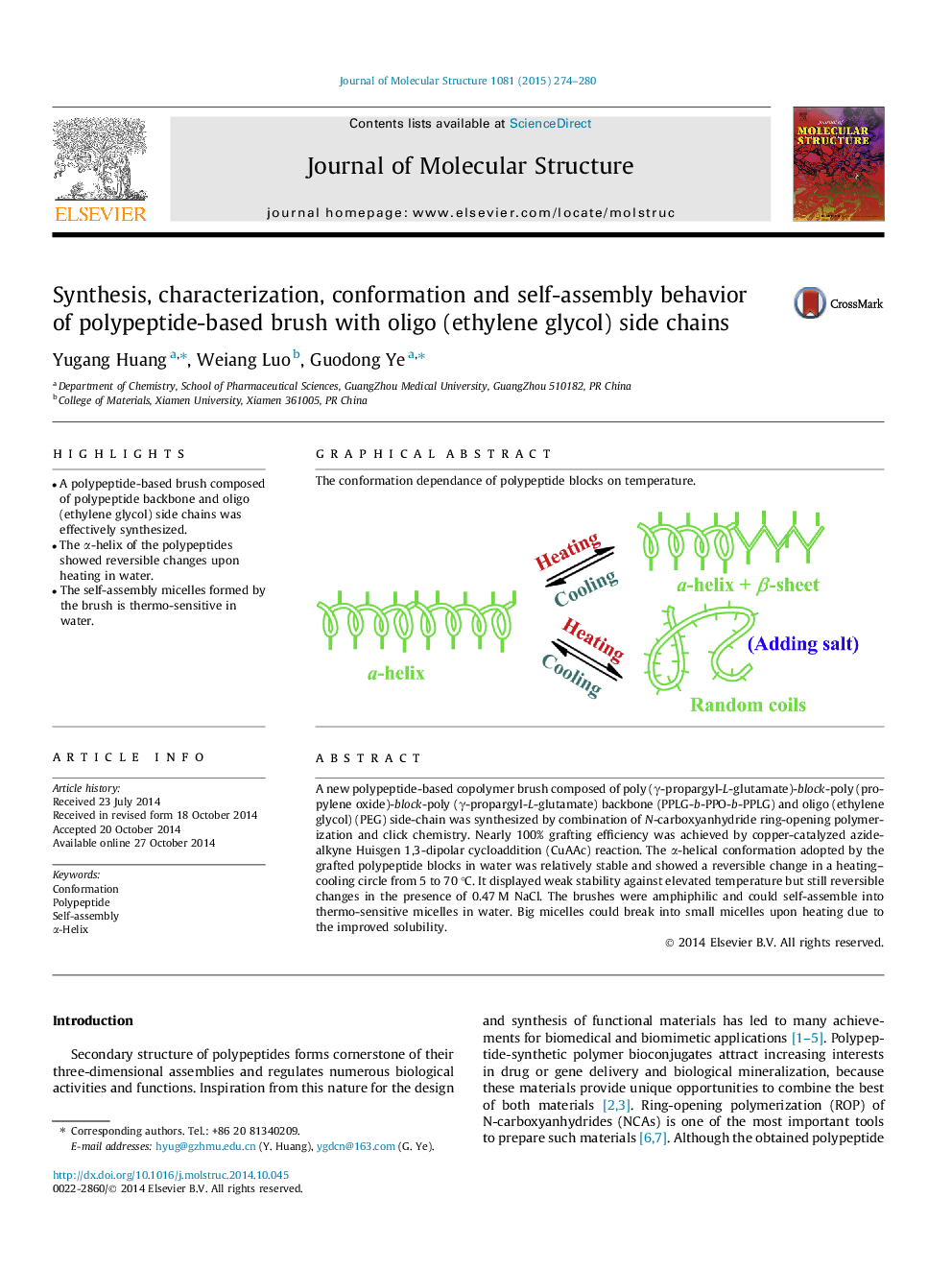| Article ID | Journal | Published Year | Pages | File Type |
|---|---|---|---|---|
| 1408334 | Journal of Molecular Structure | 2015 | 7 Pages |
•A polypeptide-based brush composed of polypeptide backbone and oligo (ethylene glycol) side chains was effectively synthesized.•The α-helix of the polypeptides showed reversible changes upon heating in water.•The self-assembly micelles formed by the brush is thermo-sensitive in water.
A new polypeptide-based copolymer brush composed of poly (γ-propargyl-L-glutamate)-block-poly (propylene oxide)-block-poly (γ-propargyl-L-glutamate) backbone (PPLG-b-PPO-b-PPLG) and oligo (ethylene glycol) (PEG) side-chain was synthesized by combination of N-carboxyanhydride ring-opening polymerization and click chemistry. Nearly 100% grafting efficiency was achieved by copper-catalyzed azide-alkyne Huisgen 1,3-dipolar cycloaddition (CuAAc) reaction. The α-helical conformation adopted by the grafted polypeptide blocks in water was relatively stable and showed a reversible change in a heating–cooling circle from 5 to 70 °C. It displayed weak stability against elevated temperature but still reversible changes in the presence of 0.47 M NaCl. The brushes were amphiphilic and could self-assemble into thermo-sensitive micelles in water. Big micelles could break into small micelles upon heating due to the improved solubility.
Graphical abstractThe conformation dependance of polypeptide blocks on temperature.Figure optionsDownload full-size imageDownload as PowerPoint slide
